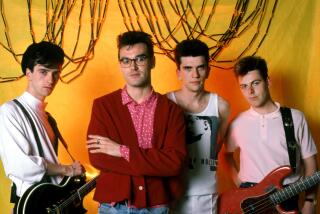Played for Notre Dame Under Rockne : Last of ‘Four Horsemen’ Dies
- Share via
SCRANTON, Pa. — Jim Crowley, who said he was lonesome as the last of the fabled “Four Horsemen of Notre Dame,” died today at 83 in a nursing home.
Crowley bounded into sports immortality on Oct. 18, 1924, when Grantland Rice, a writer for the New York Herald Tribune, dubbed the Irish backfield “the Four Horsemen” after a 13-7 victory over Army at the Polo Grounds in New York.
The image was reinforced a few days later by a nationally distributed photograph of Crowley, Elmer Layden, Harry Stuhldreher and Don Miller in full uniform sitting astride horses.
Crowley, who had been in poor health for several months, had been a resident of the nursing home since Sept. 17, 1984.
Although small in stature compared to even most high school backfields of today, the Four Horsemen under Knute Rockne rode roughshod over their opponents en route to an undefeated season.
By the time Notre Dame downed Stanford in the Rose Bowl and captured the mythical national championship, the four had become forever college football’s Famine, Pestilence, Destruction and Death.
“I don’t know if it was ever spelled out who was who,” Crowley once quipped to a writer, “but you can put me down as Pestilence.”
At 5-foot-11 and 165 pounds, Crowley won All-America honors at halfback after the 1924 season.
Crowley often marveled at how the name of a backfield that played only slightly more than two seasons had endured over the decades.
“The name just stayed on me. I didn’t ever think it would last this long,” he once said. “I’ve done other things, but I’ll always be know as one of the Four Horsemen.”
Crowley was head football coach at Michigan State University from 1929 through 1932. In 1933, he moved on to Fordham University, guiding teams to the Cotton Bowl in 1941 and to the Sugar Bowl in 1942.
After the war, he held a series of sports-related jobs, including commissioner of the old All-American Football Conference and chairman of the Pennsylvania State Athletic Commission from 1955 to 1963.
More to Read
Go beyond the scoreboard
Get the latest on L.A.'s teams in the daily Sports Report newsletter.
You may occasionally receive promotional content from the Los Angeles Times.










